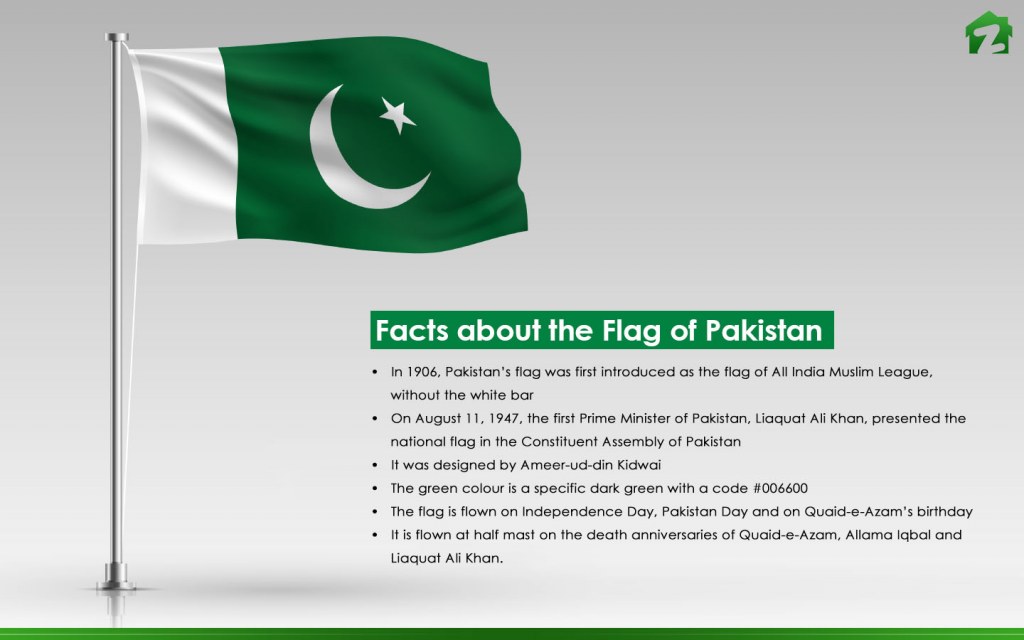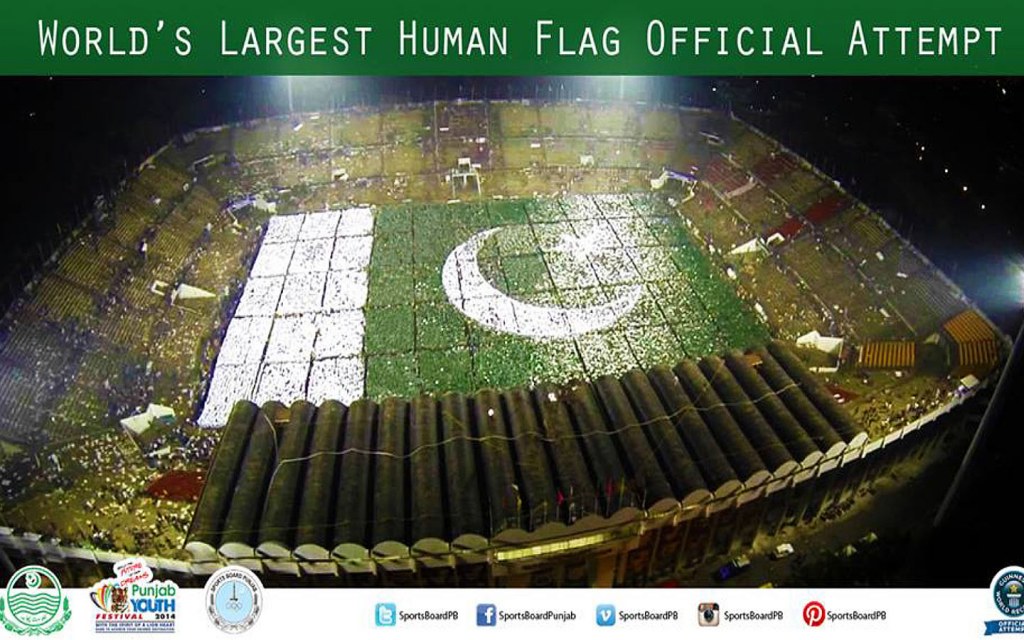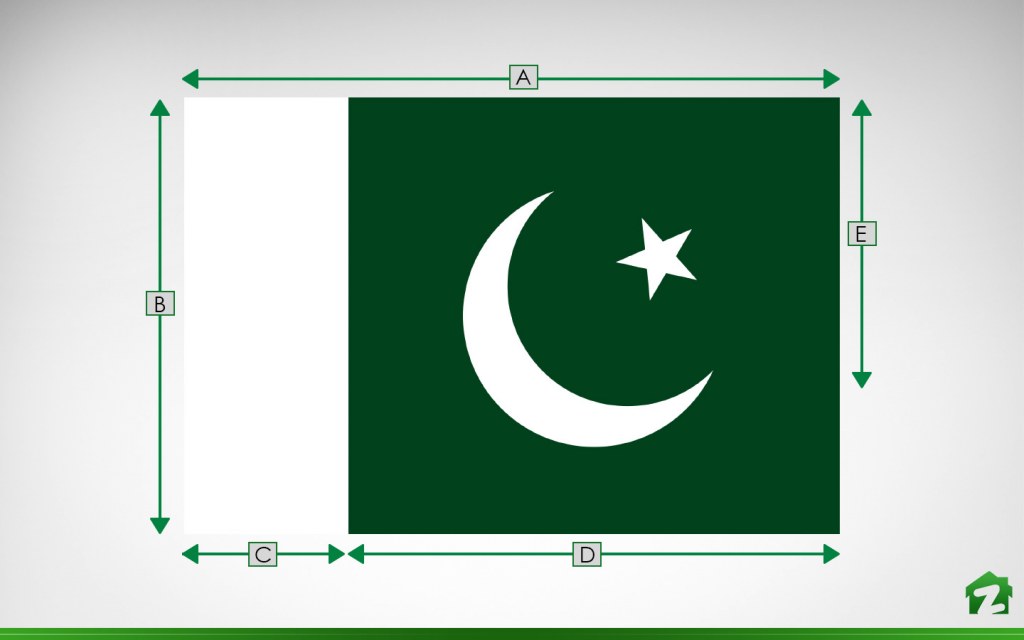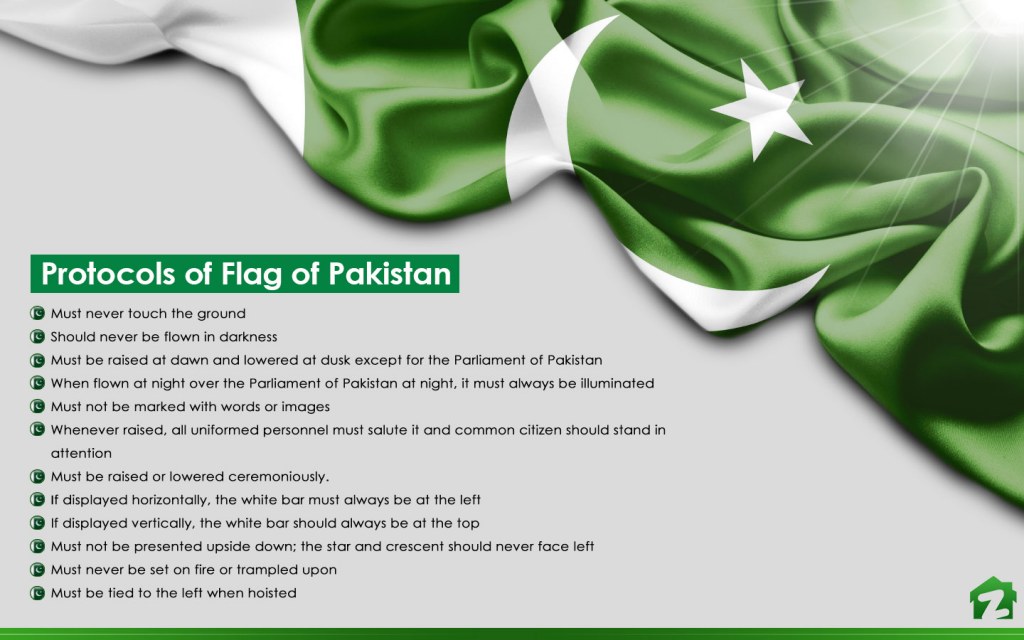In This Post:
– Facts about the flag of Pakistan
– History of flag of Pakistan
– Design of flag of Pakistan
The month of August brings about a renewed sense of patriotism in every Pakistani. The green and white flags fluttering everywhere depict the zeal and fervor of every Pakistani in observing the Independence Day. Almost every house in the country has a flag hoisted on the rooftop. People display the flag of Pakistan with pride – on their cars, in their offices, schools or by simply pinning a badge on their shirts. In light of Independence Day celebrations, we are bringing you some of the lesser-known facts about the Pakistan flag. Let’s get started.
Facts about the flag of Pakistan

- In 1906, the flag was first introduced as the flag of All India Muslim League, without the white bar
- On August 11, 1947, the first Prime Minister of Pakistan, Liaquat Ali Khan, presented the national flag of Pakistan in the Constituent Assembly
- The flag of Pakistan was designed by Ameer-ud-din Kidwai
- The green colour is a specific dark green with a code “#006600”
- The flag is flown on Independence Day, Pakistan Day and on Quaid-e-Azam’s birthday
- The national flag is flown at half-mast on the death anniversaries of Quaid-e-Azam (September 11), Allama Iqbal (April 21) and Liaquat Ali Khan (October 16)
- Nawab Siraj Raisani was the man who made the world record of creating the largest flag of Pakistan last year on 14th August
- The largest flag of Pakistan stretched from Mastung to Quetta
- Pakistan also broke the Guinness Book of World Record in making the largest human flag at National Hockey Stadium, Lahore, in February, 2014
History of flag of Pakistan

After the fall of the Mughal Empire, Muslims and Hindus were forced to live under the thumb of the British colonizers. Later, during the independence movement, Muslims were represented through a Muslim-majority party named “The All India Muslim League.”
In 1906, the flag of Muslim League was designed which was quite similar to the current flag of Pakistan – except there was no white bar on the left side. Precious lives were lost in the struggle to attain freedom and finally Pakistan came into being on August 14, 1947. The flag of Pakistan was designed and adapted three days prior to the official announcement of Pakistan i.e. on August 11, 1947.
Did you know when and how the Pakistani flag was first flown on foreign land? Here’s how the story unfolds: Some Indian boy scouts were on a tour in France when they received the news that they have become an independent nation. They were jubilant. One of the Muslim boy scouts, Mohammad Iqbal Qureshi was wearing a green turban. He quickly turned it into a Pakistani flag and unfolded it. For the first time, on August 15, 1947, the Pakistani flag was flown on foreign soil.
Official colours of Pakistani flag and design
Pakistani flag has two colours – green and white. The green color has a darker shade with the colour code “#006600” The official design of the flag of Pakistan was proposed with a crescent and star in the centre. The green field covers three quarters of the flag, while the white bar on the left side covers only one quarter of the width of the rectangular flag.

To simply put, consider the flag of Pakistan above. The proportion of length A to the width B should be of 3:2, having a white bar towards the mast. The green part of the flag contains a white crescent and a five-pointed star. The breadth of the white portion, which is donated by C in the picture, should only cover a quarter of the flag and the green portion of the flag encompasses the three quarters donated by letter D in the picture.
Pakistan’s Interior Ministry has chosen specific dimensions for flags under different circumstances:
- To celebrate any event: 9′ × 6 1⁄4′, 21′ × 14′, 18′ × 12′, 11′ × 6 2⁄3′
- Perched on buildings: 3′ × 2′, 6′ × 4′
- In front of cars: 24″ × 16″
- On table top: 10 1⁄4″ × 8 1⁄4″
What the flag represents – symbols and their meaning
As mentioned above, there are two main colours of the flag of Pakistan. The green in Pakistan’s flag represents Muslim majority in Pakistan. It also highlights that the existence of Pakistan is based on the ideology of Islam.
The white band on the left symbolizes the minorities in Pakistan. The centre of the flag has a crescent and star which characterizes progress and prosperity. Even in the national anthem of Pakistan, there is a mention of ‘Parcham-e-Sitara o Hilal’ which refers to the crescent and the star in the flag. The flag of Pakistan also affirms unity and brotherhood; Muslims and other minorities will live together in peace and harmony. Designed by Ameer-ud-din Kidwai, the flag was inspired by the flag of the Ottoman Empire and the Mughal Empire.
Important rules to follow in hoisting the national flag
The flag of Pakistan demands respect and honour. It is the symbol of sovereignty and nationhood. There are a few protocols that everyone has to follow:

- At the United Nations, the Pakistani flag is flown at the same level as the national flag of other countries
- No provincial flag or any other flag is allowed to fly higher than Pakistani flag
- It must be allowed to fly freely and should always be tied from the left side of the mast
- Such is the respect and honour of Pakistani flag that it should never fall on the ground or touch any shoes or feet
- Pakistan’s flag must be raised at dawn and lowered at dusk
- There should be no marks or writings on the flag
- Whenever the flag is raised, all uniformed personnel are instructed to salute
- The star and crescent should always face towards the right
- The flag of Pakistan should never be lowered or buried in a grave
- When burying a Shaheed and lowering a flag bearing casket, detach the flag and keep it above the grave
These were some of the lesser-known facts about the flag of Pakistan. This Independence Day, let us pledge to uphold the honour and dignity of the flag of Pakistan and also to serve our country in whatever capacity we can. If you have any queries, please feel free to contact us at blog@zameen.com. Subscribe to Zameen Blog for more updates.



